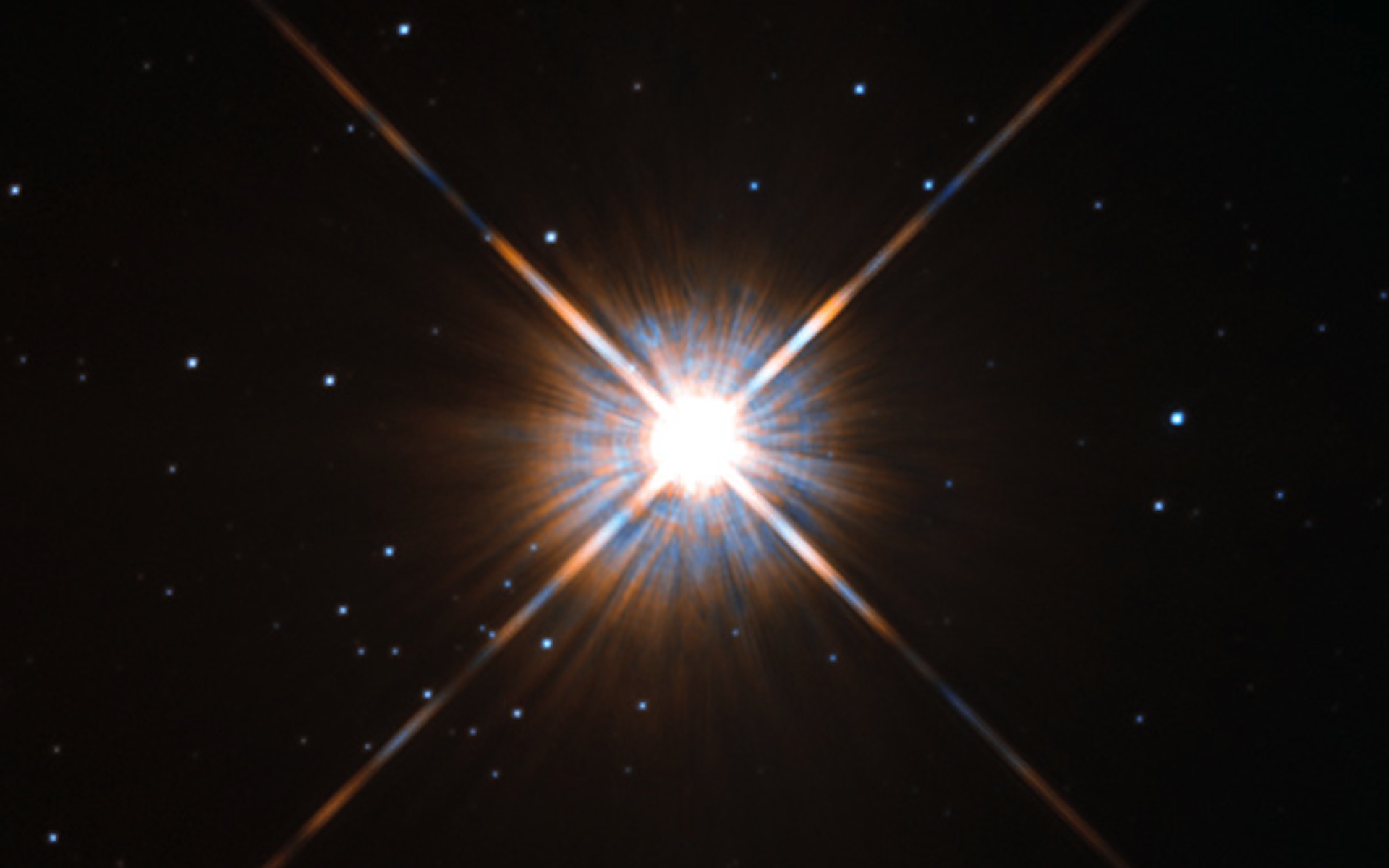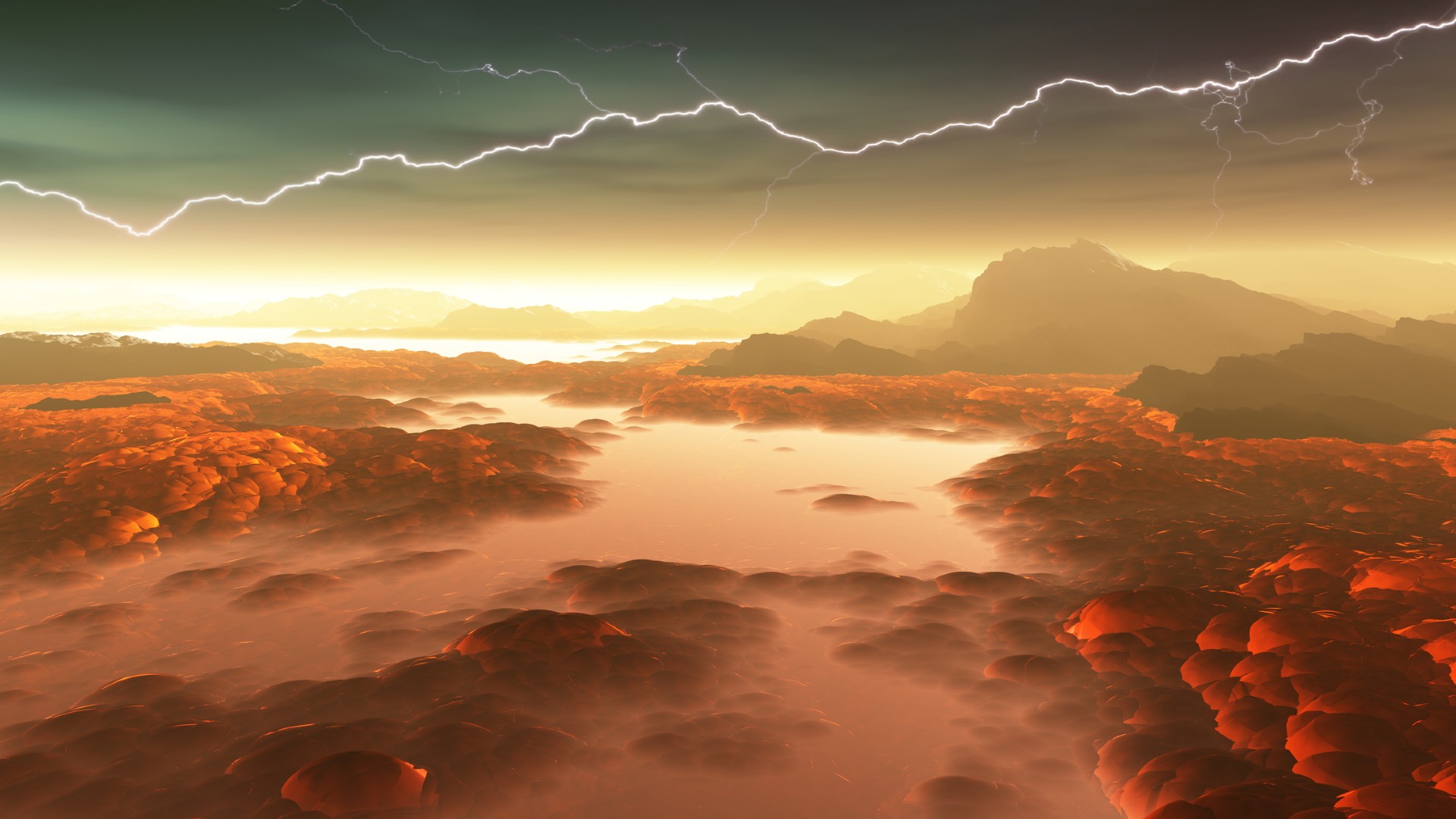Life as we know it may require lightning, as it's one of the few energy sources a planet has available to create complex chemical compounds. Now, new research has found that lightning, while not very common, can occur on tidally locked exoplanets like our nearest neighbor, Proxima b. But the peculiar nature of lightning on tidally locked planets poses some challenges for their ability to host life.
A typical lightning bolt can reach temperatures of up to 30,000 kelvins (over 50,000 degrees Fahrenheit). That's more than powerful enough to destroy common atmospheric gases and reassemble them into new compounds. On modern-day Earth, lightning breaks down molecular nitrogen and oxygen and creates nitrogen oxides.
On the early Earth, however — before the rise in atmospheric oxygen due to photosynthesis — lightning may have played a crucial role in creating many prebiotic compounds, which are molecules that form the building blocks of proteins.
We don't know if any exoplanets host life. We have yet to find an Earth twin with the right orbit around a sun-like star, but we have come close. Take Proxima b, an exoplanet that orbits the nearest star to the solar system. Proxima b is roughly the size of Earth and orbits its star, Proxima Centauri, at just the right distance to potentially support liquid water.
But Proxima Centauri is a red dwarf star, with just a fraction of the sun's brightness and size. Proxima b has an incredibly tight orbit, with an entire year lasting just 11 days. Because of its proximity to its parent star, Proxima b is almost certainly tidally locked, meaning it always shows one face toward the star, just like the moon always shows only one face toward Earth.
Because of its rotation, our planet hosts a rich weather system. This weather system makes lightning storms very common, with roughly 100 lightning strikes happening somewhere on the globe every second. But can a tidally locked planet create lightning storms?

To answer this question, a team of researchers led by Denis Sergeev at the University of Bristol in the U.K. created atmospheric simulations of a mock tidally locked planet, using the same kinds of simulations that climatologists use to study Earth's weather. In April, they submitted their paper for publication in the journal Monthly Notices of the Royal Astronomical Society.
The researchers found that the tidally locked planet could produce significant lightning storms, but that these storms were far different from those on Earth.
These planets around small stars hosted significantly fewer lightning strikes — only a handful of strikes per second, the simulations showed. And that was for planets with much thinner atmospheres than Earth's atmosphere — roughly a quarter of our planet's atmospheric pressure. Higher-pressure atmospheres suppressed the formation of convection cells that could drive cloud formation and generate the necessary friction to produce lightning. Atmospheres with pressures 10 times greater than Earth's could produce only a single lightning strike every few minutes.
Unlike on Earth, all the heat from the star pours onto one side on a tidally locked planet. That heat then flows through powerful jet streams that race from the permanent dayside to the nightside.
This powered strong weather mostly on the dayside, with lightning strikes clustered in a circular area, the researchers found. However, in some cases, lightning strikes happened mostly on the nightside, just past the day-night terminator line. It was only there that there was enough atmospheric activity to generate the conditions needed for lightning.
But that doesn't mean that this lightning could necessarily be guaranteed to help produce life. For one, lightning strikes are far less common there than on Earth and thus may not be enough to generate sufficient prebiotic compounds. Another challenge is that the strikes are not distributed evenly around the globe. They tend to be concentrated on the dayside, which may be too hot to support life.
Still, the story of life on exoplanets, even tidally locked ones, is not over. And nature has shown time and time again that life … finds a way.
.png)
 German (DE)
German (DE)  English (US)
English (US)  Spanish (ES)
Spanish (ES)  French (FR)
French (FR)  Hindi (IN)
Hindi (IN)  Italian (IT)
Italian (IT)  Russian (RU)
Russian (RU) 









Comments